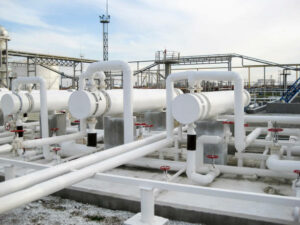
The European district heating network
District heating has long played a vital role in Northern and Eastern Europe, where winters are harsher and the demand for reliable space heating is particularly high. In these regions, district heating offers an efficient and dependable solution by delivering heat to households and businesses through a centralised network of insulated pipes. Centralised heating is more energy-efficient and easier to maintain than individual household boilers, especially when scaled across urban areas.
District heating systems vary significantly across Europe. Some networks are compact and localised, while others span large urban areas. The energy mix used to power these systems also differs by country and even by city, including combinations of biomass, fossil fuels, waste heat, geothermal, and increasingly renewables. These unique attributes shape the feasibility of integrating new heat sources, such as nuclear energy or Small Modular Reactors, into existing systems.
This analysis aims to evaluate how Northern and Eastern European countries distribute heat through their district heating networks and to assess the potential for integrating nuclear heat, particularly through SMR technology. Damona’s role in this project was to provide the client with a comprehensive, country-by-country assessment focused on select Nordic and Eastern European nations.
The study included a detailed breakdown of the energy mix within each network, identifying systems currently reliant on fossil fuels or lacking sufficient renewable inputs—conditions that make them strong candidates for baseload, low-carbon sources like nuclear. In addition, the national regulatory frameworks and strategic objectives for district heating were analysed to evaluate long-term alignment with potential atomic integration.
This data-driven approach supports informed decision-making on potential partnerships and geographic targets for SMR deployment in district heating networks.
Date: 6th July 2024





